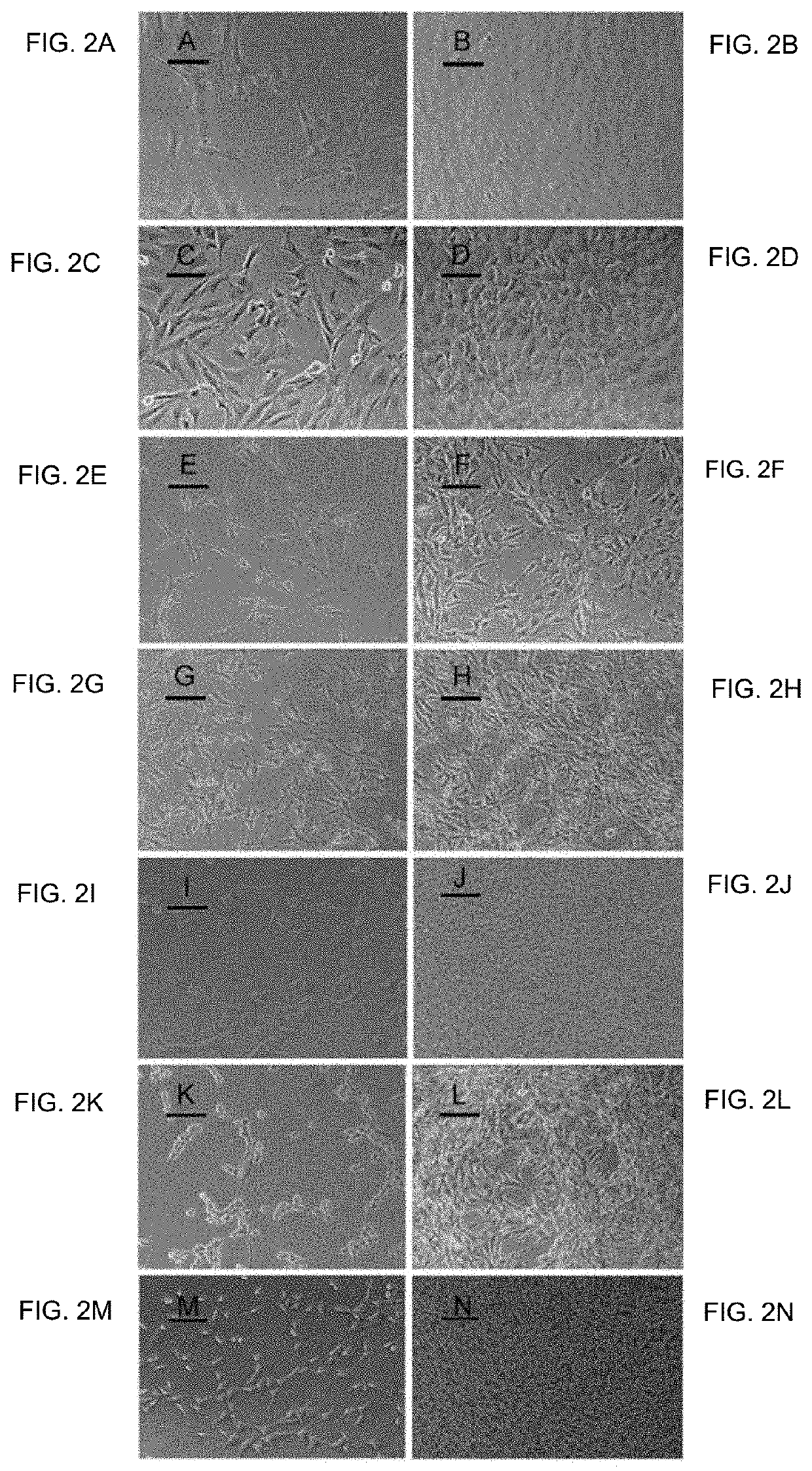Progressively tumorigenic cell lines
a tumorigenic cell line and tumor technology, applied in the field of tumorigenic cell lines, can solve the problems that cancer remains a pressing medical and public health problem
- Summary
- Abstract
- Description
- Claims
- Application Information
AI Technical Summary
Benefits of technology
Problems solved by technology
Method used
Image
Examples
example 1
Materials and Methods
[0090]Animals. Breeding pairs of NIH Swiss and NFS / NCr mice were obtained from L. Watson at NIH or the Jackson Labs and bred as outbred or inbred strains, respectively, as described by the Jackson Lab protocols. All mice at the Oral Roberts University Medical School were housed in the animal facility of the Biomedical Research Center, fully accredited by the American Association for the Accreditation of Laboratory Animal Care, and cared for in accordance with the guidelines of the National Research Council for the care and use of laboratory animals under the supervision of a licensed veterinarian. All mice at Grove City College were cared for with the same animal studies guidelines for animal use as approved by the Grove City College Institutional Review Board, which served as the animal oversight committee at the time. Nude mice (Nu- / Nu-) were obtained from Jackson Labs, Farmington, Conn. (common name: nu / nu; strain name: NU / J; stock number: 002019) or obtained...
example 2
Normal NIH Swiss Embryonic Cells
[0108]The normal primary NIH Swiss embryonic cells used to establish the other cell lines in this tumorigenic progression model were obtained from 17 to 19 days old NIH Swiss mouse embryos [37]. They are anchorage dependent, contact inhibited, and mortal, surviving about 30 cell divisions before they become senescent as typical for most diploid cell cultures [17,37].
example 3
NIH / 3T3 Cell Line
[0109]The NIH / 3T3 cell line was derived from NIH Swiss embryonic cells that have escaped this senescent “crisis” to become, immortal and contact inhibited. Although not transformed, they already have obtained properties associated with transformed cells [17]. They were not tumorigenic (Table 1) in the inbred NFS / NCr mice (0 tumors in 23 mice injected) or in the outbred NIH Swiss strain of mice (0 tumors in 105 mice injected). Each mouse was injected with 1×106 cells s.c. This negative result with NFS / NCr mice was the same as the results of Bernstein and Weinberg [3]. Variable tumorigenic and metastatic capabilities of NIH / 3T3 cells have been reported. NIH / 3T3 cells produce tumors in BALB-c nude mice [8]. These cells grow rapidly and when transferred at 4.3×105 cells / 50 mm diameter culture dish they form confluent monolayers within 2-3 days. Differences in NIH / 3T3 cell stocks, passage numbers, site of tumor cell inoculation and cell number inoculations may be respons...
PUM
| Property | Measurement | Unit |
|---|---|---|
| diameter | aaaaa | aaaaa |
| doubling time | aaaaa | aaaaa |
| doubling time | aaaaa | aaaaa |
Abstract
Description
Claims
Application Information
 Login to View More
Login to View More - R&D
- Intellectual Property
- Life Sciences
- Materials
- Tech Scout
- Unparalleled Data Quality
- Higher Quality Content
- 60% Fewer Hallucinations
Browse by: Latest US Patents, China's latest patents, Technical Efficacy Thesaurus, Application Domain, Technology Topic, Popular Technical Reports.
© 2025 PatSnap. All rights reserved.Legal|Privacy policy|Modern Slavery Act Transparency Statement|Sitemap|About US| Contact US: help@patsnap.com



